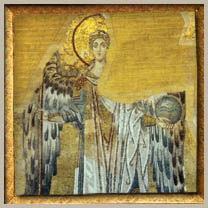Learn more about the history of Pallasart Web Design - Creating Innovative Website Designs since 1996


Portrait of Nicholas I by Zichy from the Great Palace The Moskovsky Road enters the town near the huge stone building of the Tsarskoe Selo Practical School of the Emperor Nicholas II, which was built in 1902 by the architect Iossa. The school was opened on the 16th of September of the same year. It is kept by the Ministry of Public Instruction and by a yearly supply of 3000 rubles from the town. It has one preparatory class, six main-classes and one additional class. The pay for the instruction is 70 rubles a year. It was built with the money, given by the Ministry of Public Instruction; the Ministry of the Court gave the land, while the town presented 20,000 rubles.At the present time the Tsarskoe Selo four class town school, which was founded in 1784, occupies the same building. We give a short history of the first school of Tsarskoe Selo. It developed out of a school, kept by a deacon, named Sarcomyzsky, where the Empress Catherine I, while Peter the Great was still alive, used to send the children of the peasants of her farms "for instruction and supervision". A governess was sent to help the deacon, and she taught the girls hand work. Under Elizabeth Petrovna this school was, converted into an official school for 44 boys, and was moved to the outskirts in the neighbourhood of the palace; but in 1730 the school with its pupils and teachers, was obliged to be moved to Kuzmino, because the scholars, during their ramblings in the park, used to disturb the Empress. The children were taught: scripture, writing in Russian and simple arithmetic. Once every three years every boy received an allowance of 1 ruble 521/2 kopecks for clothes, 89 kopecks, for shoes and linen, and 5 kopecks three times a year for salt. In 1784 this school was converted into a small popular-school and was established at Sophia in a stone house, which, was given for this object by a nobleman, Ivan Lazarev On the 16th of January of the same year Lazareff brought the Empress the key of the house, and 1000 rubles for the school's expenses. On the day of the opening there were 50 scholars of both sexes and two teachers. Besides the usual subjects, the 1st class was to know a book called "Rules for Scholars" and the 2nd "The Duties of a Man and a Citizen". In 1806 the school was again reformed into a "District School", according to the regulations of 1804. It was not a successful alteration, for in the first place, there was no preparatory school in Tsarskoe Selo, where children could be prepared for a district parish-school, and in the second place, one teacher could not possibly teach all the twelve subjects, included in the program. Therefore up to the opening in 1830 of the parish classes, the school remained in a most deplorable condition. However there were a good many pupils, though only a few of them finished the whole course, since some of them entered the "service" or the "shops" at 'an early age, and others were expelled "for violence and theft". The number of scholars from 1784 to 1833 was about 100 every year, with only two teachers, who served 36 years at a yearly pay of 150 to 200 rubles. Sometimes the school-work was stopped, for want of ink to write with. It was the duty of the inspector of the school, the Baron Dolst, to provide ink and such things. He held this post from' 1808 to 1833, and lived in St. Petersburg. In 1816 Lazarev's house was given to the Engineering department, and the classes were moved into a wooden one-storied building in Tsarskoe Selo. Finally in 1838 a parish school", consisting of three classes was formed, and an official teacher, as well as an inspector and doctor (Girt, Taland, Peshel) were appointed. Now began, a more flourishing period of the school', thanks to a whole series of gifted teachers and inspectors. The number of pupils was then about 70. In 1879 the district school was again reformed into a town-school. Since 1872 the school began to decline, the teachers, expecting their dismissal, had given but scant attention to their duties. Since 1879 the number of pupils reached the total of 140 a year. The premises of the school, were occupied till 1809 by a square with a granite cistern in its centre. In the wide streets, which surrounded the square, was a hay and wood market. The legend says, that public executions used to take place here. |









